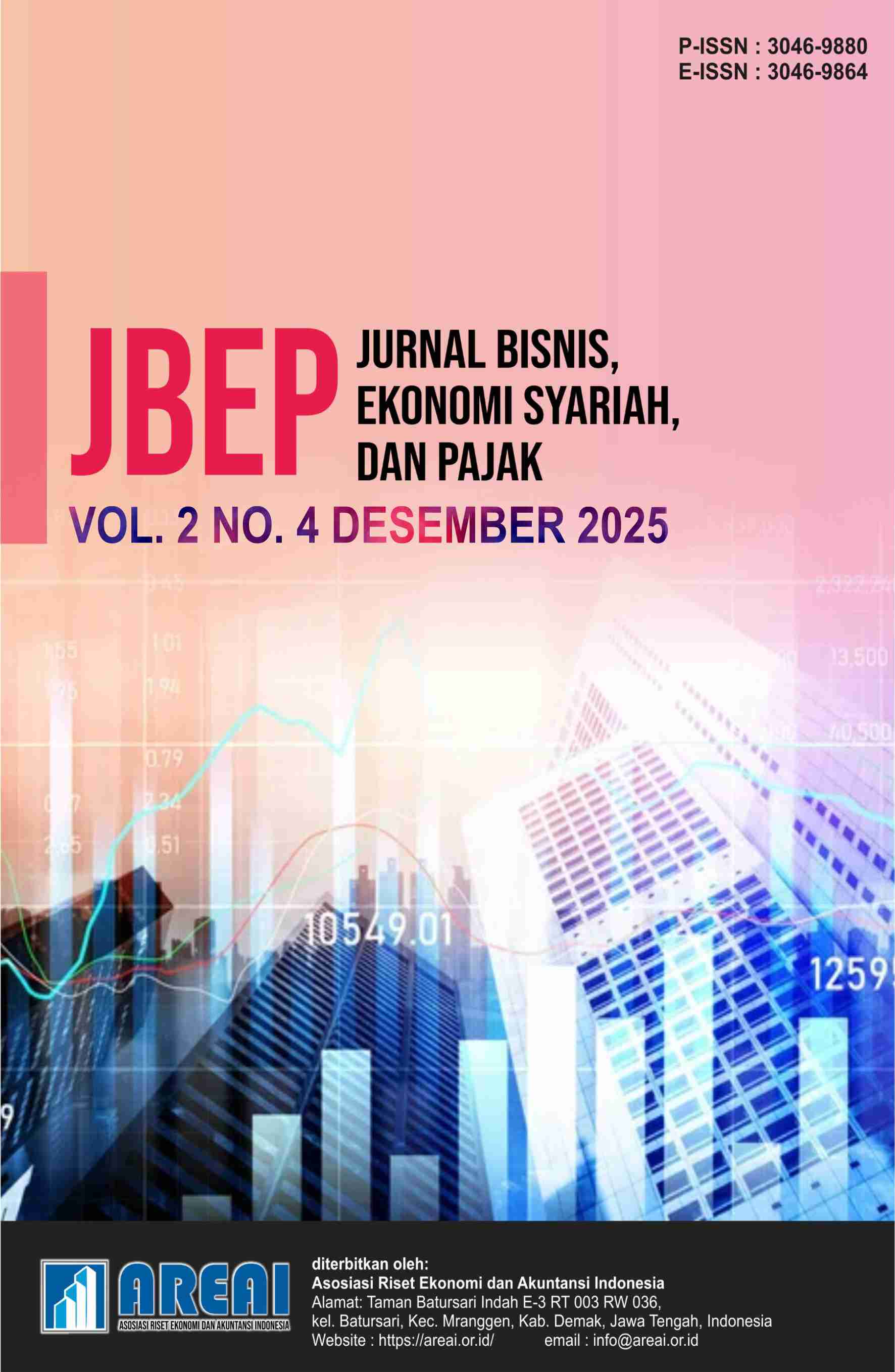Mekanisme Penciptaan Uang dalam Lembaga Keuangan Syariah: Antara Prinsip Kehati-hatian dan Fungsi Intermediasi
DOI:
https://doi.org/10.61132/jbep.v2i3.1700Keywords:
money creation, Islamic finance, prudential principle, intermediation, maqashid al-shariahAbstract
This study analyzes the mechanism of money creation in Islamic financial institutions by highlighting its relationship to the principle of prudence and the intermediation function. The research background is based on the growth of Indonesia's sharia capital market which by 2025 will reach a capitalization of IDR 5,060 trillion, but still faces conceptual challenges regarding how money is created according to the principles of maqashid al-shariah. The method used is Systematic Literature Review (SLR) with PRISMA guidance on 38 relevant scientific articles. The results of the study show that money creation in the sharia system only occurs through real asset-based economic activities, in contrast to the conventional system that relies on credit and interest expansion. The intermediation function is carried out through partnerships that prioritize proportional sharing of risk and profit, while the prudential principle ensures that monetary expansion remains under control. In addition, research has found that sharia contracts such as murabahah, mudarabah, and musharakah play a role in encouraging productive money circulation while suppressing speculative activities. This study concludes that the integration between the moral and economic dimensions forms a just, stable, and sustainable Islamic monetary paradigm. These findings make a conceptual contribution to strengthening Islamic financial policy in Indonesia, especially in formulating a monetary regulatory framework that is in line with the principles of distributive justice, transparency, and protection of the stability of the national financial system.
Downloads
References
Aisyah, A., & Ansori, M. (2025). Peran dan kontribusi perbankan syariah dalam perekonomian Indonesia: Tinjauan histori. JPSDa: Jurnal Perbankan Syariah Darussalam, 5(1), 14–25. https://doi.org/10.30739/jpsda.v5i1.3405
Dey, R., Kassim, S., Maurya, S., Mahajan, R. A., Kadia, A., & Singh, M. (2024). A systematic literature review on the Islamic capital market: Insights using the PRISMA approach. Journal of Electrical Systems, 20(2), 730–746.
Evi Silvia Aulina, L., Lilis, L., Nisa, R. A., & Sari, R. N. (2024). Peran uang dalam sistem moneter Islam: Membangun ekonomi yang adil dan stabil. Moneter: Jurnal Ekonomi dan Keuangan, 3(1), 139–157. https://doi.org/10.61132/moneter.v3i1.1106
Hanik, N. (2020). Perspektif ekonomi syariah dalam sistem pembiayaan. Jurnal ..., 8(1), 62–77.
Lavoie, M. (2020, January 8). Endorsing the money-creation view. Just Money. https://justmoney.org/endorsing-the-money-creation-view/
Lubis, S., Rohmatika, A., Aliyah, S., & Sari, R. N. (2024). Efektivitas instrumen kebijakan moneter syariah dalam menjaga stabilitas nilai tukar. Moneter: Jurnal Ekonomi dan Keuangan, 3(1), 32–45. https://doi.org/10.61132/moneter.v3i1.1070
Marifa. (2014). Islamic banking & finance: Principles and practices. https://islamicbankers.center/wp-content/uploads/2014/09/marifas-practical-guide-to-islamic-banking-and-finance.pdf
Nur Anisa, L. (2024). Integration of Umer Chapra’s Islamic economic values in Indonesian economic policy. Journal ..., 3(1).
Nurhayadi, W., Sudarmanto, E., Mubarok, A. Z., Yahawi, S. H., & Desi, A. V. (2025). Peran Islamic Financial Services Board (IFSB) dalam meningkatkan stabilitas perbankan syariah di Indonesia. Sanskara Akuntansi dan Keuangan, 3(3), 106–114. https://doi.org/10.58812/sak.v3.i03
Otoritas Jasa Keuangan. (2025). Laporan awal tahun. https://ojk.go.id/id/Publikasi/Infografis/Documents/OJK%20Laporan%20Awal%20Tahun%202025%20(1).pdf
Perbankan, J., Islam, K., Sofianiyati, L., Pradana, A. R., Susilo, A., Syariah, S. B., Umkm, D., Meningkatkan, D., Melalui, P., & Kasmiati, P. (2024). Penerapan Tabungan IB Hijrah Rencana sebagai alternatif pelunasan biaya haji pada PT Bank Muamalat Indonesia, Kantor Cabang Pembantu Madiun. Jurnal ..., 1.
Prasetyowati, R. A. (2020). Model perilaku kompetisi perbankan syariah: Pembuktian empiris industri bank umum syariah Indonesia dan Malaysia.
Savon, Z. (2025). Does monetary policy affect the stability of Islamic banks? International Journal of Economics and Financial Issues, 15(6), 97–104. https://doi.org/10.32479/ijefi.19944
Shabsigh, G. (2024). Maintaining financial stability in a challenging risk environment. Islamic Financial Services Board. https://www.ifsb.org
Syariah, K. E., & Siddik, M. Y. (2025). Independensi perbankan syariah dalam promosi produk berbasis syariah. Jurnal At-Tamwil: Kajian Ekonomi Syariah, 7(1), 29–45. https://doi.org/10.33367/AT-TAMWIL.V7I1.7049
Wahyudi, A. (2022). Implementasi metode Maqashid Syariah Index terhadap kinerja perbankan syariah. Lisyabab: Jurnal Studi Islam dan Sosial, 3(2), 206–218. https://doi.org/10.58326/jurnallisyabab.v3i2.135
Wahyuna, S., & Zulhamdi, Z. (2022). Perbedaan perbankan syariah dengan konvensional. Al-Hiwalah: Journal Syariah Economic Law, 1(2), 183–196. https://doi.org/10.47766/alhiwalah.v1i2.879
Downloads
Published
Issue
Section
License
Copyright (c) 2025 Jurnal Bisnis, Ekonomi Syariah, dan Pajak

This work is licensed under a Creative Commons Attribution-ShareAlike 4.0 International License.





